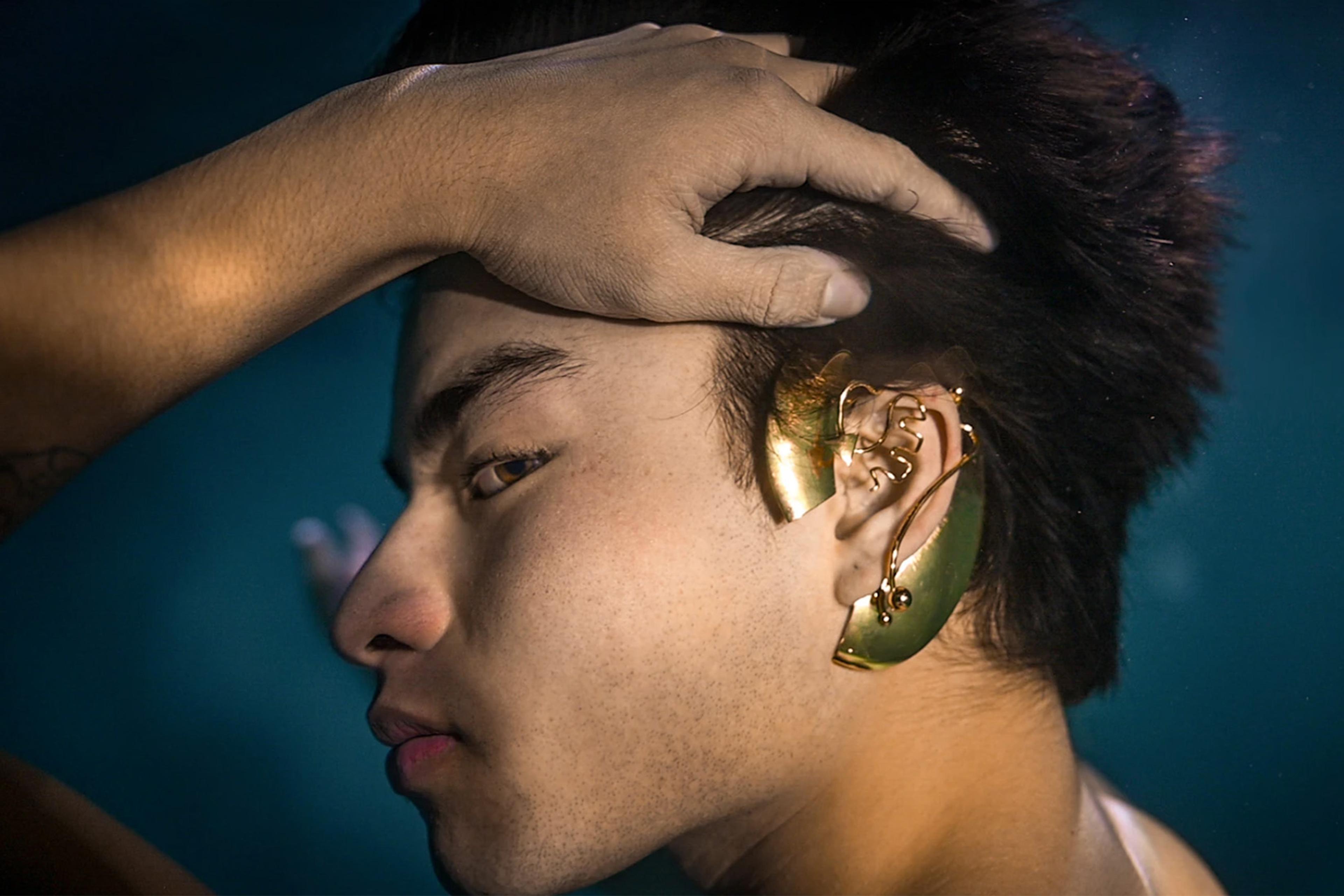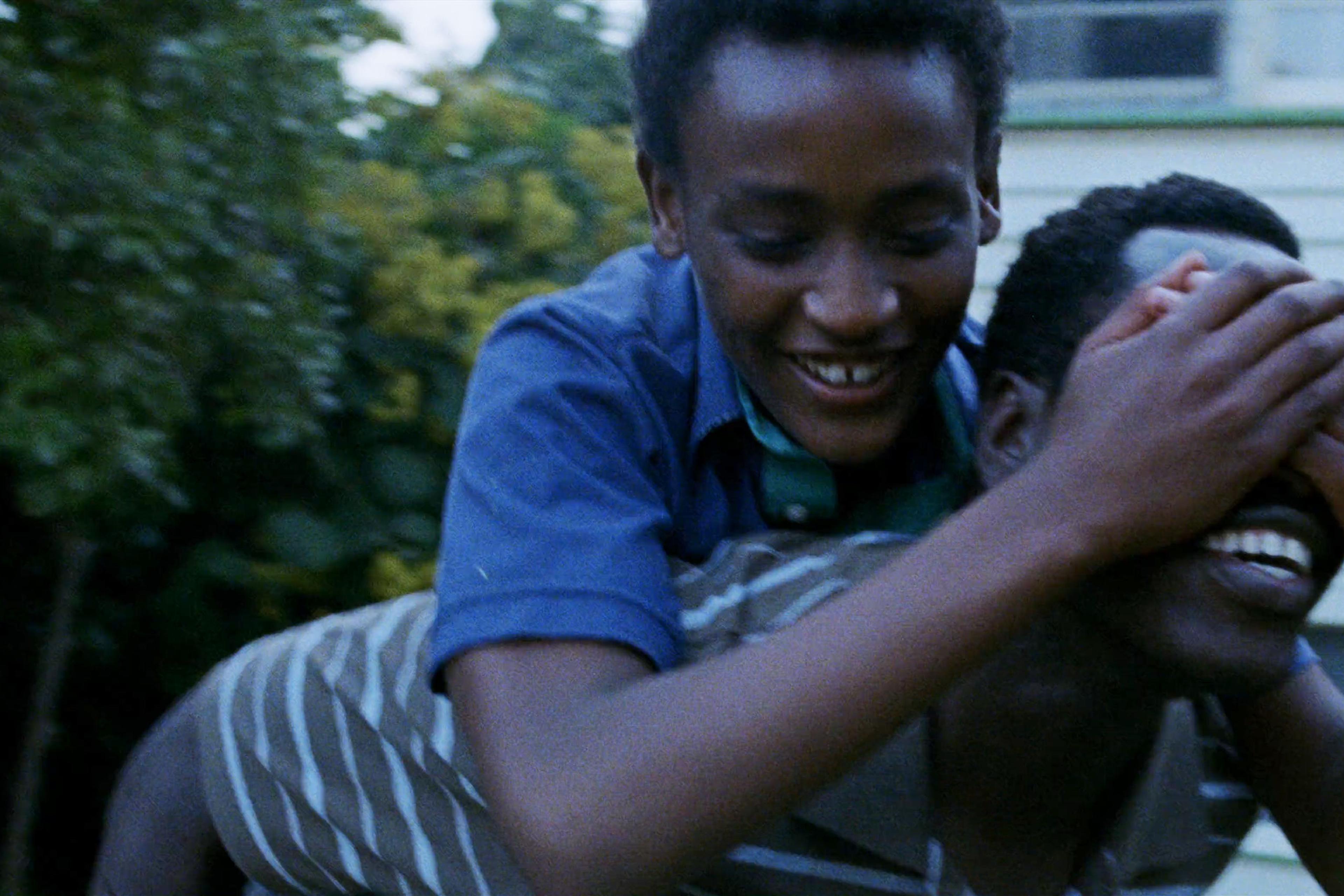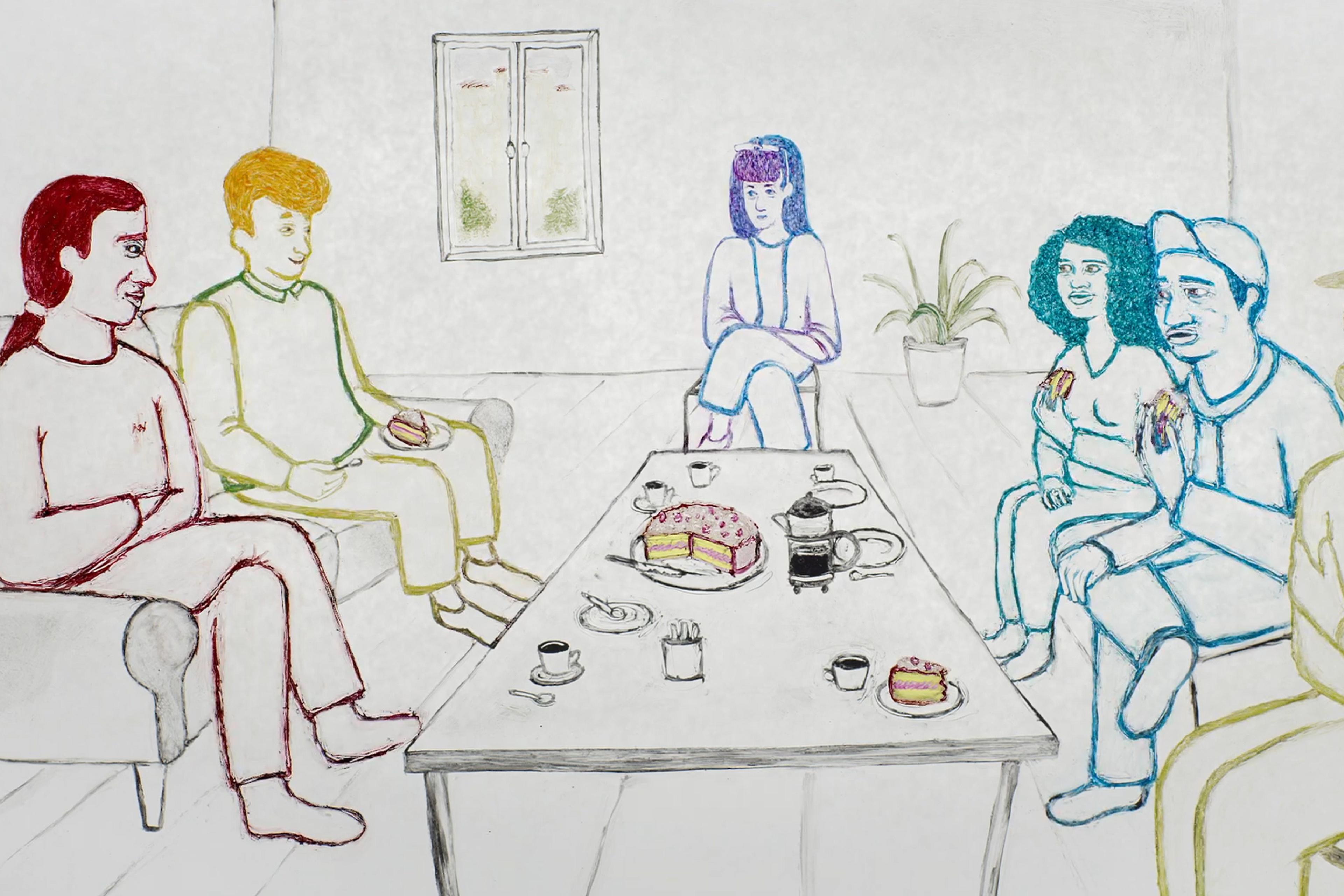‘Now I sit here listening to the space of deafness – ’
– from ‘Echo’ by Raymond Antrobus, from his poetry collection The Perseverance (2018)
When the British Jamaican poet Raymond Antrobus began to learn British Sign Language (BSL) as a student at the Blanche Nevile School for Deaf Children in London, he found himself caught between the hearing and Deaf worlds. Hearing pupils teased him if they saw him speaking BSL, while Deaf students made fun of his lack of fluency, calling him a ‘baby signer’. He writes: ‘Looking back, this was when I most needed the nurturing of a Deaf identity, one that wasn’t medical, but philosophical, one that … valued Deafness as a way of being.’
This tension of living between hearing and signing communities animates Sounds for Mazin by the Dutch director Ingrid Kamerling, who follows 12-year old Mazin in the weeks leading up to and following cochlear implant (CI) surgery. Like Antrobus, Mazin lives in a state of simultaneous participation and exclusion: he signs fluently at school, but can’t talk much with his hearing family at home; he aches to communicate with his loved ones, but he doesn’t want to ‘abandon’ the Deaf friends who have chosen a life without an implant.
Mazin is excited to get his CI, he wants to hear the TV and chat with hearing friends. Nevertheless, Kamerling’s film doesn’t shy away from the tensions surrounding implants within the Deaf community. Mazin’s friend Kateline feels that her friends with CIs have abandoned her and accuses them of leaving her out. If everyone gets a cochlear implant, she says, ‘there won’t be any Deaf people left’. Her comment echoes a statement from the National Association of the Deaf in the US: ‘Deaf people like being Deaf, want to be Deaf, and are proud of their Deafness.’ For some, deafness is a disability that can be ‘cured’ with a cochlear implant, but for others, Deafness is a cultural identity that should be embraced, celebrated and respected. This latter group sees cochlear implants as an existential threat to Deaf culture and the community to which they belong.
Even as it shows the moment when sound first rushes into Mazin’s world, the film takes a balanced approach that moves decisively away from the ‘miracle cure’ angle of viral ‘hearing for the first time’ videos. It immerses the audience in the experience that can accompany the overwhelming sensory flood when an implant is turned on, revealing sound as unexpected and sometimes unpleasant, and showing the painstaking training necessary to distinguish and identify different sounds. Still, there are also moments where Mazin is visibly delighted. The detail of the world roars – the fine crackle of a cellophane wrapper brushed with an arm, the delicate trickle of water from a spoon, the hiss of breaks at a pedestrian crossing, the endless song of a saucepan that he clangs, like a cymbal, just for its music.
But it’s not only the post-implant world that has, as Antrobus says of powerful hearing aids, ‘glistening clarity’. When Mazin is playing and signing with his friends, there’s a sense of joyful volume; Kateline’s signing is full of exuberant expression; and as Mazin watches a silent field of players darting on a football pitch, the movement has an intensity – as if the lack of sound somehow turns the action up. Mazin speaks little, but close-ups on his face compel the viewer to study every emotion that passes over it. Apprehension, fear, delight, joy, discomfort – each appears and vanishes in the flick of an eyelid or the crease of a brow. Perhaps the viewer’s heightened attention mirrors the attunement that Deaf people must pay when navigating the world, lipreading, studying eye contact, paying close attention to body language and facial expression. In sign language, which is made up of dozens of hand gestures, palm orientation, location, movement and expression, a subtle change can completely alter the meaning. Every detail speaks.
Studying Mazin’s face, a question unfurls. His family are overjoyed, his friend is dejected, but how does Mazin feel? As he enters the world of sound, Mazin must grapple with his Deaf identity, find his own way of being and belonging, his own space of deafness.
Written by Nicola Williams







